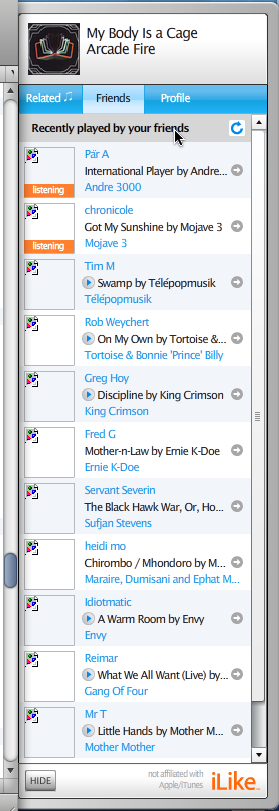As Web 2.0 Buying Season winds down, it is pleasant to consider what was different about it. This time, for the most part, the buyers have been farmers, not butchers. They bought to nurture, not to kill.
The merger years
Before the web, I worked in advertising. I survived the Merger Years. Charles and Maurice Saatchi, the art collectors, were among several groups scooping up ad agencies as investments. Not infrequently, incompatible shops were jammed together to see what stuck. My first New York ad job was at one of these misbegotten unions; I started on the very day more than half the staff got canned as a direct result of the merger.
The new owners had performed unholy matrimony, forcing a dewy-eyed little shop in Minneapolis to love and cherish a dull, aging cash cow in New York. They probably imagined that the cold New York joint would warm to the creative touch of its young spouse, while the Minneapolis branch would somehow grow as lucrative as the boring but high-earning Gotham shop. It wasn’t meant to be. Clients ran screaming; staff were kicked out after them.
Behind the iron doors
“Oh, boy, my first New York job!” I said aloud as I approached the iron doors.
I walked into a tragedy. Women wept, carrying boxes. Ashen-faced middle-aged copywriters with bad portfolios—parents of young children—suddenly realized that they were unemployable.
The floor on which I was to work was being frantically redecorated to match the corporate colors of Minneapolis as almost everyone who worked there was laid off within a space of hours. “Pardon Our Appearance, We Are Redecorating” proclaimed a happy illustrated painter on a large sign. His was the only grin to be seen. Someone eventually drew an executioner’s hood over the happy painter’s head, and replaced his brush with an axe. Okay, that was me.
Over the next few years, the Saatchis brought in one brilliant outside creative director after another to try to make the merger work. I learned from all of them. The place was great for me in that way. It was also a fine source of drinking buddies. Almost nobody could handle the daily surrealism sober.
I worked at other places over the years. The great ones were small and created their own cultures. The not-so-great ones had almost always been good until they got too big.
Web for sale
Years later, I was a web designer doing independent content on the side. Some of my friends were also doing independent content. Some of them sold their sites to corporate buyers.
I was glad to see creative people get a paycheck, but suspicious because of what I had seen of mergers in my previous career. I feared that the buyers might not understand what they had bought, and might try to make it something it was not. And that indeed is what happened, every time.
Stay cool
In one instance, a married couple and their friend built up one of the first great educational sites for web developers. Everybody who knew the acronym HTML read this site in the mid- to late 1990s. It was informative, opinionated, and leading-edge. The writers were front-line web developers. They weren’t just ahead of the curve, they were helping to shape it. And they weren’t just technology writers, they were personalities. Huge personalities.
They also knew how to keep readers coming back, and and how to turn readers into a community. One way they did both these things was by honoring a different website every weekday. Hundreds of thousands of web professionals tuned in Monday through Friday to find out what site was being put forward as cool, and to argue passionately about whether it deserved such kudos.
It all changed the moment a traditional publisher bought the site, for what, by later standards, was surely a mere chest of shells and beads.
Out went the big personalities. (Literally. The founders were so frustrated, they soon quit.) Front-end web development articles focused on sponsoring companies’ technologies instead of JavaScript, CSS, and HTML, and were written with anonymous professionalism instead of character. The site’s point of view disappeared, and with it, so did most people’s interest in reading it. The daily cool site became a random shot over the bow instead of demonstrating a philosophy about emerging web content. At times one suspected the daily site was picked because of some back-room deal or misbegotten partnership arrangement.
What the publishers got for their investment, after destroying everything else about it, was residual search engine juice. Maybe that was enough for them.
Fortunately, the new buyers want more.
Born to run
When a famous old-school stock photography concern bought iStockphoto, some of us feared that it spelled the end for that independent photo community. Not so. iStockphoto is still iStockphoto, only now it has money. Likewise, Yahoo! bought flickr as flickr—not as a list of users to exploit or a URL to slap ads on. It bought del.icio.us as del.icio.us; all the purchase did (besides generate paychecks) was integrate the social bookmarking tool into other Yahoo! properties (like flickr). Similarly, Dodgeball is still Dodgeball despite its purchase by Google.
One could list these buyouts all day, but it would soon grow tedious. The point is, buyers now buy to own, not to run (and ruin).
Are today’s buyers smarter? Or are they just too busy to meddle? What do you think?
[tags]web2.0, buyouts, mergers, saatchi[/tags]

